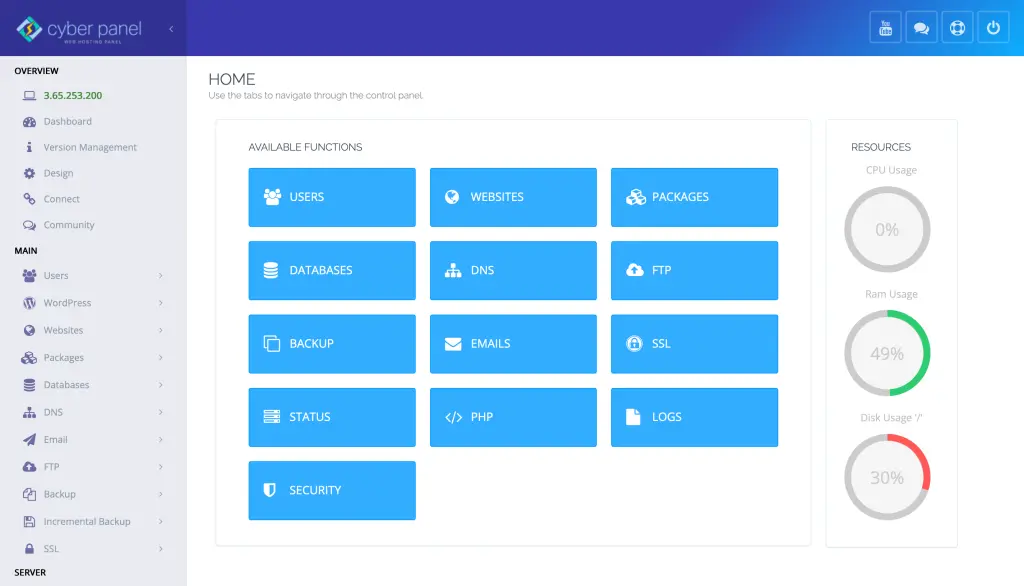One of the most powerful tools in the Linux command-line toolbox is the tail command. It is useful to show the last few lines of a file. This is what makes it useful for viewing logs, debugging, and real-time file watching. Whether you’re diagnosing a server or just watching log files get updated in real time, the tail command gives you instant insight into what’s going on.
The tail command is a powerful tool that can help you work more efficiently, especially when working with log files that update in real-time. In this guide, we will cover the Linux tail command, second-by-second, real-world uses, and best practices so that you can keep an eye on files and master this command.
Tail Command Basic Syntax
Here is the basic syntax for the tail command:
tail [options] [file...]For example:
tail /var/log/syslogTail Command in Linux: Key Options
Let’s look at some of the frequently used options with the tail command in Linux:
- -n [number]: Displays the given number of last lines.
- -f: Follows the file as it grows huge, but log files.
- -c [number]: Writes out the last number of bytes.
- –pid=PID: With -f, exits when the given process terminates.
- –quiet or -q: Suppresses headers when multiple existing files are given.
Examples
tail -n 20 /var/log/auth.logDisplays the last 20 lines of the auth log.
Get exclusive access to all things tech-savvy, and be the first to receive
the latest updates directly in your inbox.
tail -f /var/log/nginx/access.logShows added lines to the Nginx access log in real time
Visual Flowchart: How Tail Command Works
graph TD;
A[Start] --> B{Tail Command Entered};
B --> |Static View| C[Show Last N Lines];
B --> |Real-Time (-f)| D[Track File Growth];
D --> E[Update Terminal with New Lines];
C --> F[End];
E --> F[End];Monitor Logs with The Linux Tail Command
One of the most powerful uses of the tail command. This is what system administrators use to monitor:
- Server performance
- Error messages
- Login attempts
- Application behavior
Using the command:
tail -f /var/log/syslogYou will be able to watch the syslog file being updated in real-time. This is crucial for identifying problems right away.
Output
Apr 13 10:12:10 server1 systemd[1]: Starting Cleanup of Temporary Directories...
Apr 13 10:12:10 server1 systemd[1]: Started Cleanup of Temporary Directories.Combining Tail with Other Commands
Tail is often a command to pipe into or use within other commands to create powerful workflows.
dmesg | tail -n 15Shows the last 15 kernel messages.
tail -f /var/log/apache2/error.log | grep "error"Monitor the error log generated by Apache on error lines.
Command Tail Linux: Beneficial Use Cases
The command tail, on which most Linux environments depend, will enable you to:
- Stream application logs in real time
- Debug code execution
- Track down system updates and cron jobs
Because of this, tail is one of the must-have commands for every box of Linux administrator.

Common Mistakes and Debugging
File Not Found
Error: tail: cannot open ‘filename’ for reading: No such file or directory
Solution: Check if you have the correct permissions and if the file exists.
Permission Denied
Error: tail: cannot open ‘/var/log/auth.log’ for reading: Permission denied
Solution: If the log files are owned by root, use sudo.
sudo tail -f /var/log/auth. logUnexpected output or Garbled characters
Solution: Make sure you are looking at a text file. The second possibility is that binary files will generate spew output.
Log Rotation Issues
Problem: If the log file is rotated, tail may stop working. Solution: Use tail -F, instead of -f, to follow filename changes during log rotation
tail -F /var/log/syslogCommand Keeps Running Unexpectedly
Problem: Tail doesn’t exit because of -f flag . Solution: Use -f when needed. Use Ctrl+C to exit manually.
High CPU Usage
Cause: High-traffic log with grep or scripts, tailing it. Solution: Optimize filters or log rotation
Linux Tail Command Usage Best Practices
Here are some best practices to use the Linux tail command:
- Use -f carefully: It will hang your terminal forever. Always use with intent.
- Use grep or awk: Filter desired patterns for targeted monitoring.
- Use tail -F for Rotated Logs: It prevents loss of continuity in monitoring.
- Do not tail large binaries: Tail is for text files.
- Have Multiple tail views with watch: The watch script can be used to run multiple tail commands, if required.
- Automate with cron or scripts: Automate tail in scheduled scripts to identify patterns on its own.
- Redirect tail output to a file: Useful for logging or alerts.
Role of CyberPanel in Managing Logs with Tail

CyberPanel is a next-gen web hosting control panel that runs on top of OpenLiteSpeed. Tail is a CLI tool, but CyberPanel adds to it by providing GUI-based log monitoring access and terminal access. Here are a few key features:
- Logs display in the browser with live refresh
- SSH terminal for tail commands directly
- Access to web app error logs, email, and server processes
CyberPanel gives you the best of both worlds: one where GUI convenience meets flexible CLI tools, like tail on native Linux.
FAQs: Tail Command in Linux
What is the tail command in Linux?
The tail command displays the last few lines of a file. It is commonly used to view log files.
How can I view the updates in real-time using the tail command?
You can use -f option. For example: tail -f filename
What’s the difference between tail -f and tail -F?
-F follows the name of the file and works even if the file is rotated.
How do I stop a tail command?
Press Ctrl + C to close the tail process in the terminal.
Wrapping Up!
For Linux pros and enthusiasts alike, the tail command is essential. From snapshots of logged activity to constant monitoring of files, it keeps you dialed into the heartbeat of your system. And when you learn this, it will take your system monitoring to the next level, especially with the new real-time options, filters, and tools like CyberPanel.
Whether you are a newbie in the Linux world or managing an enterprise-level infrastructure, it is always beneficial to have mastery of the tail command in Linux!



